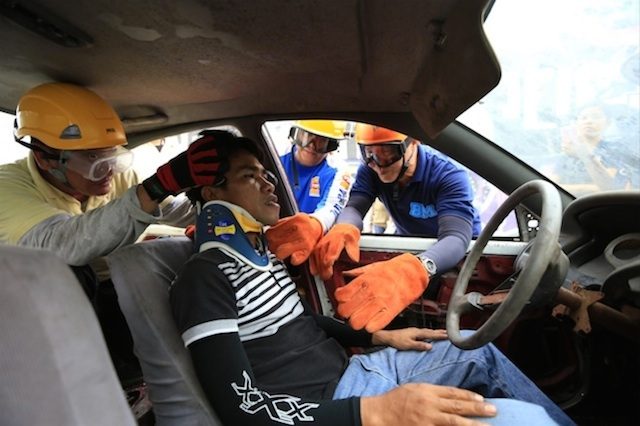SUMMARY
This is AI generated summarization, which may have errors. For context, always refer to the full article.

MANILA, Philippines – Since 2006, the number of road crash deaths in the Philippines has been increasing, despite the country’s goal to halve the number of deaths by 2020.
Government data showed that since 2010, the number of road crash deaths in the Philippines has never dipped below 8,000. Most of the fatalities are Filipino youth, with children also vulnerable – more than 500 children die each year as a result of road crashes. (IN NUMBERS: Road crashes in the Philippines)
In 2011, the Philippines launched a road safety action plan in a bid to achieve the goal of reducing the number of road crash deaths by 50% in 2020.
The Philippine Road Safety Action Plan has 5 pillars, which should all fit in to contribute to a safer road environment:
Improve road safety management, which includes the development of policies and implementation of programs on road safety; institutionalizing road safety units in key government agencies and local government units; passing enabling laws, ordinances, and regulations on road safety; and lobbying for legislative and executive action to allocate funding for road safety, among others.
It also covers the development and maintenance of a road crash database system by key agencies, and the proposal for a Comprehensive Road and Traffic Safety Law, including the creation of a National Land Transportation Safety Board or Council.
Safer road, which covers the need to improve safety standards in hazardous locations; adopting road design standards; provision of bike lane facilities; and the conduct of road safety audits, among others.
Safer vehicles, which covers the implementation of a Motor Vehicle Inspection System (MVIS) nationwide, and the implementation of a National Vehicle Maintenance Program and Standards, among others.
Safer road users, which covers road safety education for vulnerable road users; conducting road safety forums and workshops; re-training drivers; launching public awareness campaigns; sustaining the enforcement on traffic laws especially on anti-overloading and overspeeding campaigns; and the prohibition of bicycles and tricycles and unauthorized modes of transport on national roads, among others.
Improve trauma care and rehabilitation, which includes identifying and setting up trauma units in all tertiary hospitals; training of trauma centers’ personnel; and training in First Aid and Basic Life Support including behavioral modification for law enforcement units, among others.
Slow down
According to Dr Shin Young-soo, Regional Director for the Western Pacific of the World Health Organization (WHO), there is an urgent need to fast-track the implementation of road safety policies to meet the development target of cutting road traffic deaths and injuries.
This year’s United Nations Global Road Safety Week focuses on the need to slow down, which the WHO says is one of the simplest ways to avoid road crashes.
More than 1.25 million people die globally from road traffic injuries. Speed is a major risk factor in up to half of fatal crashes in low- and middle-income countries.
In a press release, the WHO pointed out that congested cities and crowded roads underscore the need for motorists to slow down. It said that reducing average traveling speeds by 5% could reduce fatal road crashes by 30%.
“If every vehicle on every road slowed down even a little, there would be fewer crashes – and certainly fewer serious injuries and deaths,” Shin said.
The WHO said an adult pedestrian hit by a car going at 50 km/h will end up seriously injured but would still survive. But if the car were traveling at 80 km/h, the victim could die from severe injuries.
While setting speed limits is an effective step, the WHO also said effective law enforcement and the integration of speed management and monitoring in the design of roads and vehicles are also needed.
“I have heard people say that death and injury on the road are an inevitable consequence of transport, motorization, and rapid economic development – and therefore that nothing can be done. This is wrong,” Shin said. – Rappler.com
Add a comment
How does this make you feel?
There are no comments yet. Add your comment to start the conversation.